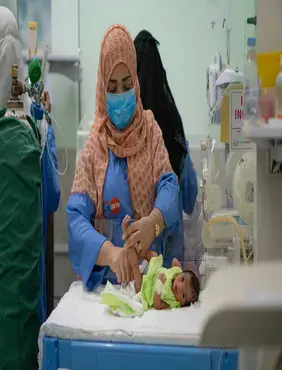After more than seven years of war and economic decline, Yemen remains one of the world’s worst humanitarian crises. A staggering 23.4 million people — 75 per cent of the population — require some form of humanitarian assistance in 2022. More than 4.3 million people have been displaced from their homes, the economy has collapsed and nearly the entire health system has shattered, with only half of all health facilities remaining functional.
A new IPC food security analysis found deteriorating levels of food security across Yemen. Conflict remains the primary underlying driver of hunger in Yemen. The economic crisis – a by-product of conflict– and the currency depreciation have pushed food prices to their highest levels since 2015. The war in Ukraine is likely to lead to significant import shocks, further driving food prices. An estimated 19 million people requiring food assistance in 2022. Among them an estimated 1.3 million pregnant and breastfeeding women are projected to experience acute malnutrition sometime in the course of 2022. They risk giving birth to newborns with severe stunted growth, and nursing malnourished infants, as a result of rising food insecurity.
The aid operation in Yemen remains severely underfunded. In March, the UN and the governments of Sweden and Switzerland co-hosted a High-level Pledging Event for the Humanitarian Crisis in Yemen, aimed at raising funds to meet the urgent humanitarian needs of millions of Yemenis. Some US$1.3 billion were pledged at the event, less than a third of the $4.3 billion required to sustain lifesaving assistance programmes in 2022 under the Yemen Humanitarian Response Plan .
Since the beginning of the year, lack of funding has forced UNFPA to scale back lifesaving reproductive health and protection interventions across the country, placing the lives of thousands of women and girls in grave danger. For instance, in the first quarter of the year, some 40,000 women lost access to protection services. To keep reaching the most vulnerable women and girls, UNFPA requires US$100 million in 2022. To date, only 13 percent of this funding appeal has been received.
From January to March 2022, UNFPA's response reached more than 700,000 individuals with life-saving reproductive health services, protection information and services and emergency relief, with support to 98 health facilities, 35 safe spaces, 7 shelters and eight specialized mental health centres.



